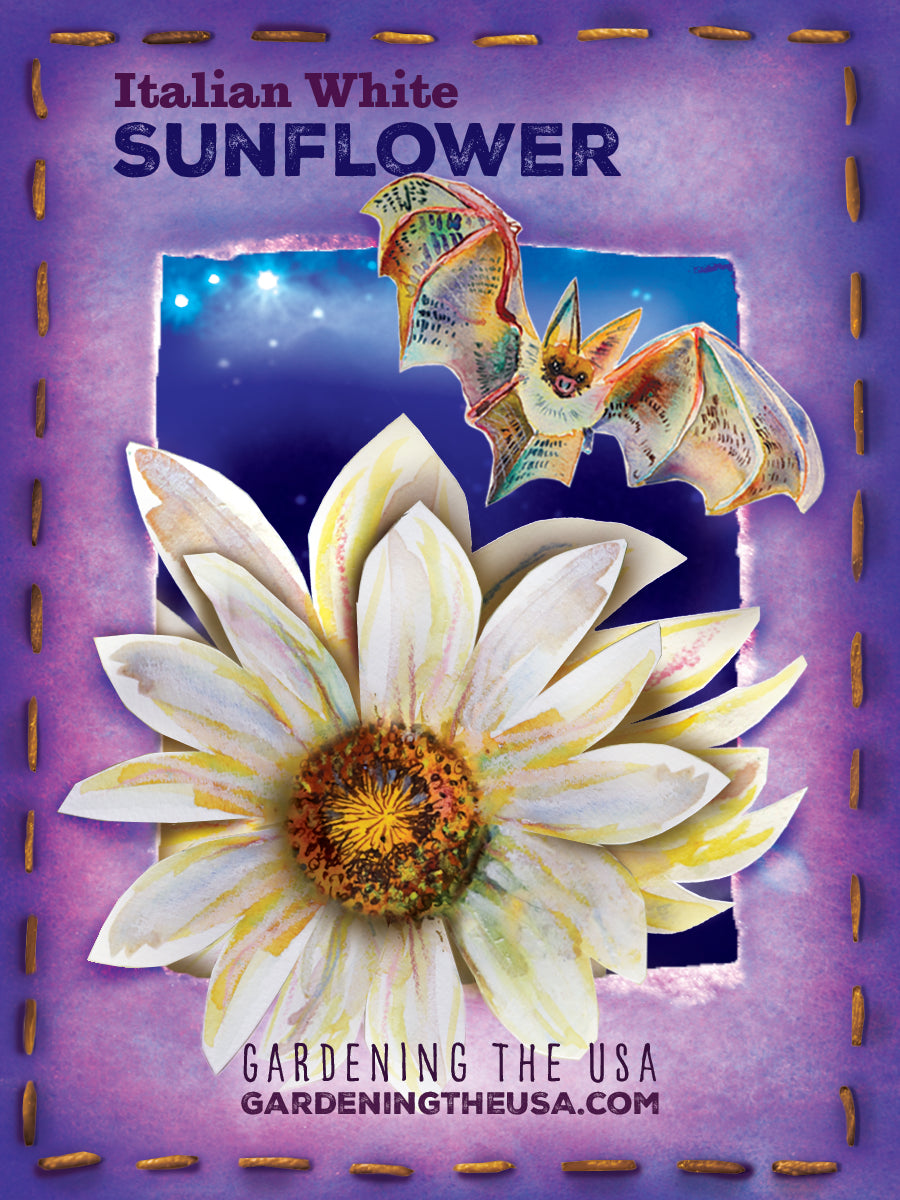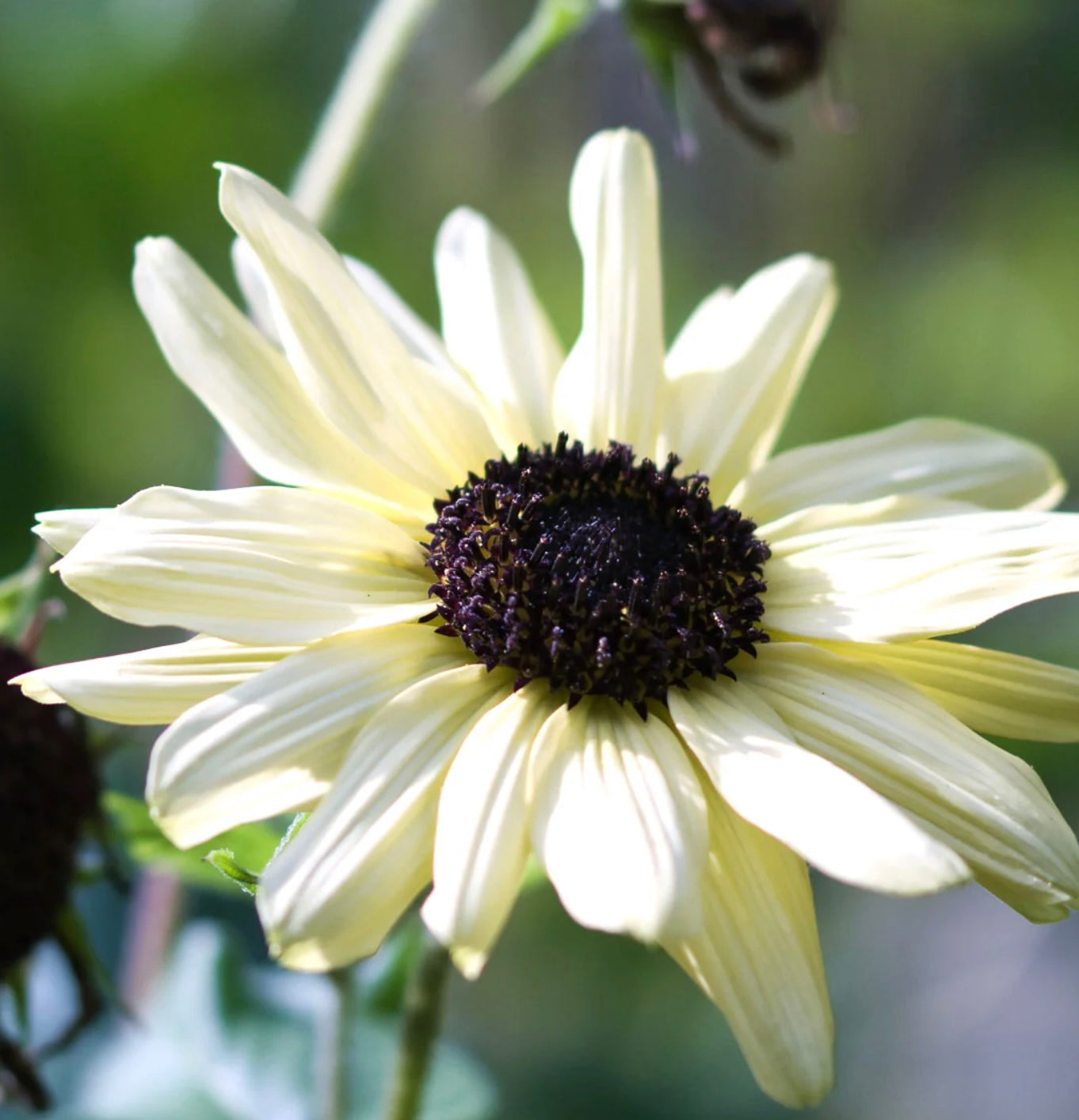Sunflower - Italian White
Sunflower - Italian White
Germination: 7 - 10 Days
Planting Instructions
Sunflowers do best with direct sowing. They aren't picky about soil type and can grow 5 - 7 feet tall. the blooms are approximately 4" across. Plant at a depth of 1/2 inch in full sun. They are 'sow' easy ti grow, and will bloom all summer long.
Care
These flowers are drought and heat tolerant but do need the occasional drink of water, especially when they are young. They develop deep taproots and don't like to be disturbed - hence the direct sow.
History
There's mixed messages out in the research fields about the history of this flower. Some say it was developed in Texas, perhaps a variant of some kind. Some of the history seemed to point to the flower being cultivated in Tuscany, Italy for centuries and originating from that area. The sunflower is a vital part of the area as it contributes to the local economy. So though the history is a bit sketchy at points, the fact is sunflowers have amazing abilities!
Did you know that sunflowers are known as phytoremediators, which means they can absorb heavy metals and other toxins from the soil because of their large and deep root systems. They can absorb toxic metals like lead, copper, cadmium, zinc and arsenic as well as radioactive isotopes. Because of their high capacity to absorb heavy metals from the soil they're also considered hyperaccumulators.
Why We're A Little Bat Crazy Over This One
Bats are important to the ecosystem and it's good to help them in any way we can. They act as a natural pest control, pollinate plants, disperse seeds, and all of that benefits agriculture, forestry and the overall ecosystem. Sunflowers stay open at night making their pollen available to moths, which bats love to eat. Other insects will burrow into sunflowers to sleep, beetles, flies, etc and bats will also eat those. So plant sunflowers and help our batty friends. They're facing severe decline and many are listed as endangered. Other plants that help bats are: Yarrow, purple coneflower and night blooming plants such as moonflower, night blooming jasmine and evening primrose.
A Few More Fun Facts About Sunflowers
Besides providing pollen and nectar for insects, sunflower seeds provide food for many birds, squirrels, chipmunks, as well as humans. I use them to provide shade in my garden due to the fact that they grow so large and the leaves are so big! Because they survive the heat and draught it's the perfect job for a sunflower. If you leave the stalks over the winter solitary bees and other insects will nest in them to survive. What a great contribution they are to the ecosystem overall.
Facts:
- The tallest sunflower was 30' 1" and was grown in 2014.
- Sunflowers are one of the fastest growing plants.
- They are heliotropic, meaning the follow the sun's movement.
- Sunflowers were the original filler for life jackets.
-
The flowers within a sunflower head are clustered in a spiral pattern whereby each floret is oriented towards the next by the golden angle of 137.5°. This produces a pattern of interconnecting spirals. The number of left and right spirals are consecutive Fibonacci numbers. Normally there are 34 spirals in one direction and 55 in the other. Very large sunflowers can have 89 in one direction and 144 in the other.
Share






